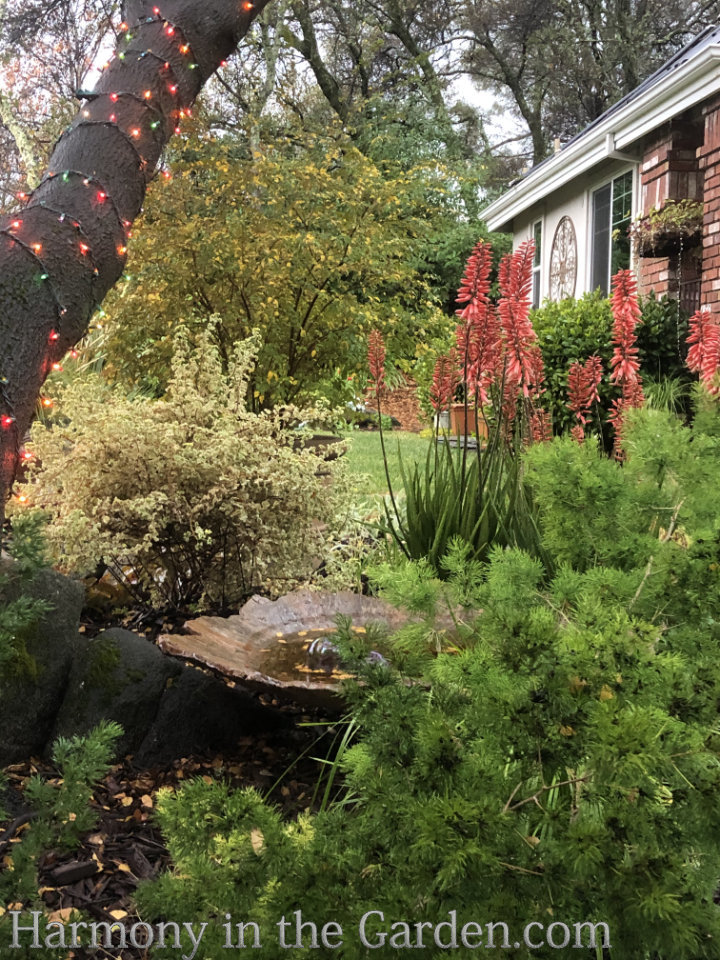
It’s mid-December, and most of my garden is now fast asleep.
This week’s rain has knocked off the remaining fall leaves, perennials are silently slumbering underground, and there’s no longer the buzz of busy insects feasting on pollen.
But my garden still has loads of visual beauty, thanks to all the evergreen plants that are sprinkled throughout.
As I walked around my garden, I realized that many of my very favorites come from Sunset’s Western Plant Collection.
And while I’ve gardened with some of these plants for years, some of them are new introductions, graciously sent to me to trial.
The one thing they all have in common is they’re over the top fantastic – tough, reliable, and exceed all expectations.
I call these plants the December Garden Rockstars, as THIS is their time to shine!
Aloe ‘Safari Rose’ (zones 9-11)
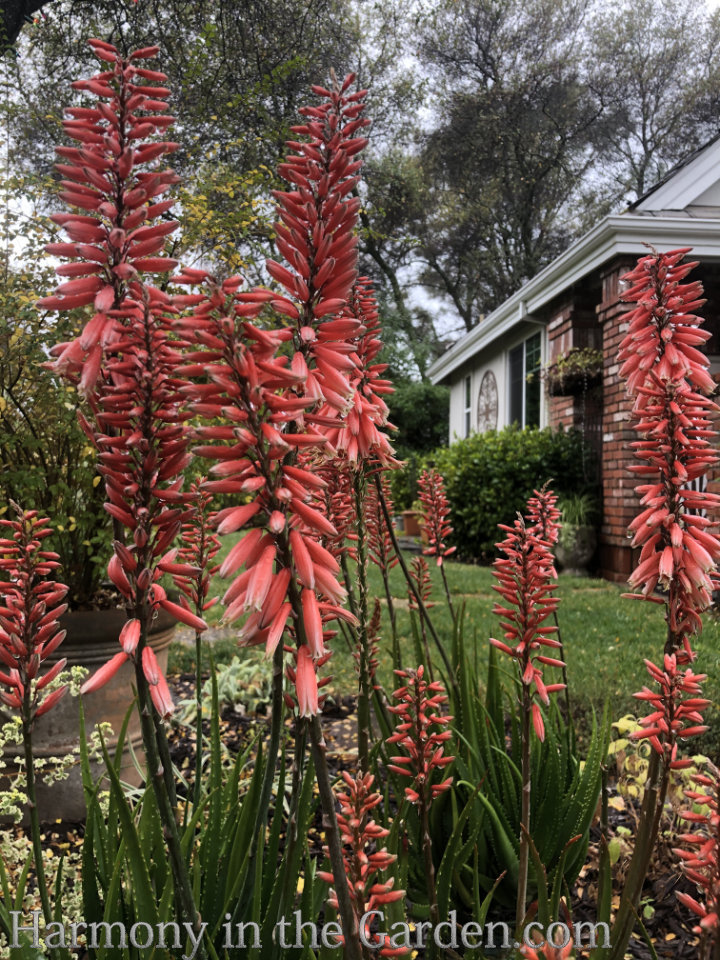
Can you believe the flowers on this aloe?
They’re in full bloom right now, so I just had to include them in this list of evergreens.
And while I’m not focusing on succulents in this post (even though they’re evergreen in my zone), I wanted to highlight this particular aloe with its unique rosy-pink flowers.
Most of my other aloe varieties have orange-red flowers, so this color is a welcome addition to my garden.
And the hungry hummingbirds are so appreciative of the winter source of nectar.
Holly ‘Golden Oakland’ (zones 6-9)
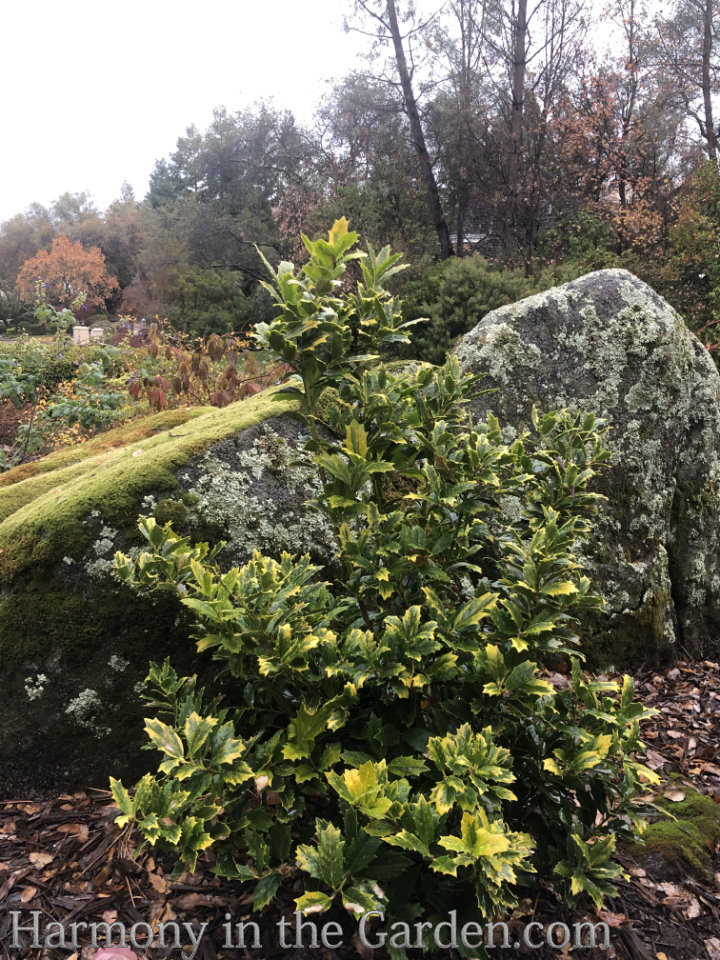
This summer, a giant oak tree fell down in this area of my front garden.
So, in homage to the oak, I planted this ‘Golden Oakland’ holly near the same spot.
The shape (and pointy edges) of the leaves remind me of my oak tree, but honestly, I like it SO much better!
The gold variegation is stunning year-round and survived this past blistering summer (with temps over 100) without skipping a beat.
This variety will grow to 15-20’ x 12-15’ wide, making it ideal for tucking in between the granite boulders.
And speaking of those boulders, oh how I love the way the gold foliage echoes the chartreuse moss!
Cleyera ‘Juliet’ (zones 7-10)
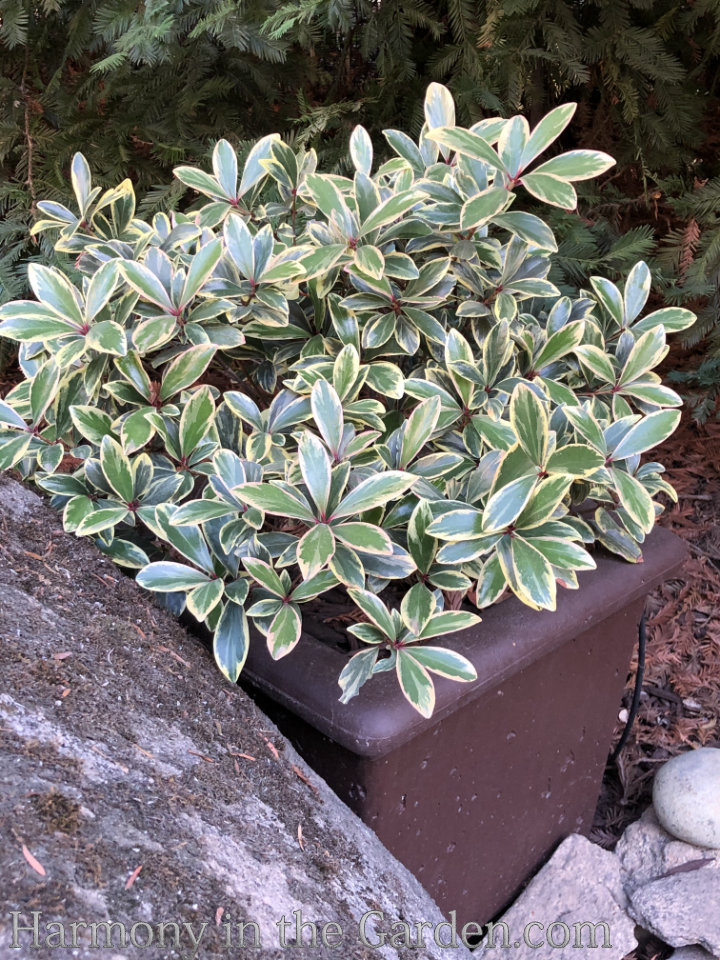
Another variegated beauty that I’ve tried for the first time is Cleyera ‘Juliet.’
I incorrectly assumed it would fry to a crisp in our intense summer heat, so I planted this in a container (figuring it would be temporary.)
Boy, was I wrong! Sunset’s description says it’s heat-tolerant, and they’re not joking.
The super glossy cream and green variegated leaves look PERFECT every day of the year – no exaggeration. This plant receives about 5 hours of intense afternoon sun and doesn’t seem to mind it a bit.
‘Juliet’ quickly grows to an impressive 8-10’ x 5-6’, making it a perfect choice for the back of the border.
I love the hints of maroon in the stems and can’t wait to relocate it in my front garden with a ‘Blackbird’ euphorbia nearby – won’t that be a gorgeous combination?
Camellia sasanqua ‘October Magic Bride’ (zones 7-9)

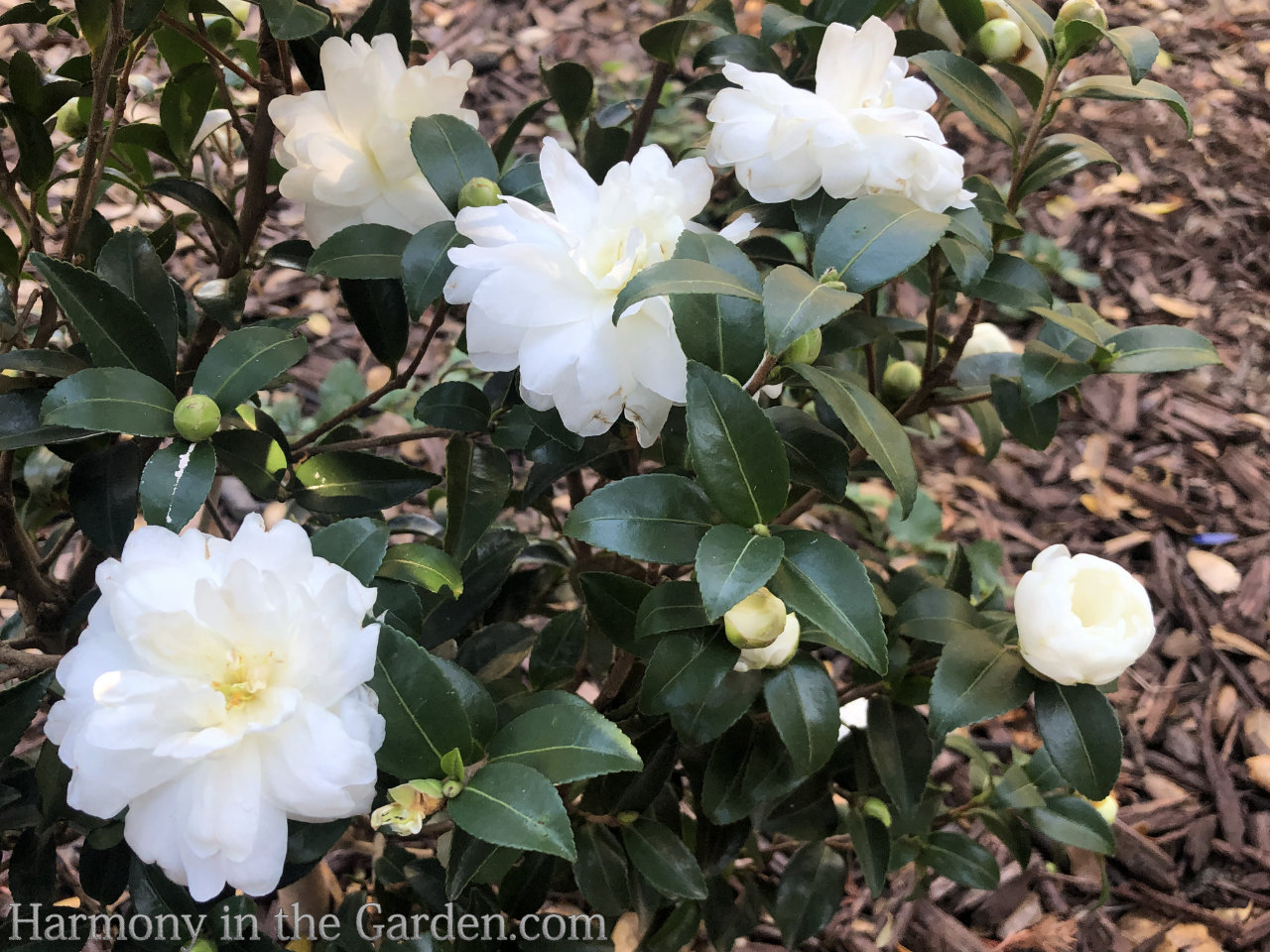
I’m so happy to include this new camellia ‘October Magic Bride’ to my ever-growing collection (you can read more about my favorites here.)
It’s a smaller variety, growing to compact 4’x3’, which means it’s perfect for the middle of the border.
It has a super long bloom time (October through January), with small, (3-inch) pure white double flowers.
Dianella ‘Coolvista’ (zones 8-10)
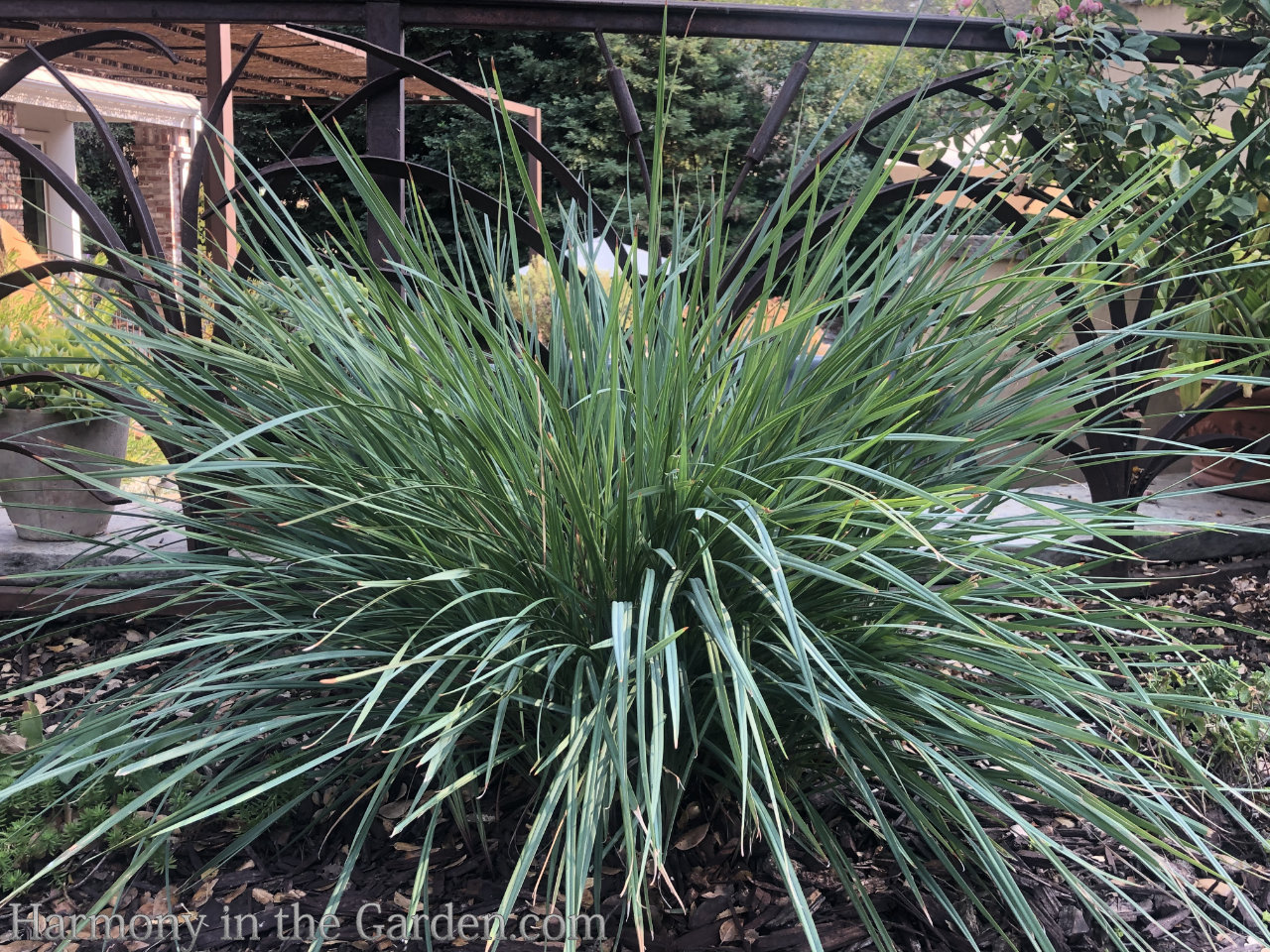
‘Coolvista’ is the only dianella that I’ll plant, after having my heart broken with other varieties that develop burnt edges (even in the shade!)
Not only is the steely-blue color a great addition to my garden, but the foliage is thinner than many varieties, resulting in a more refined form.
And talk about bulletproof! It’s another plant (like the Cleyera, above) that looks absolutely PERFECT every day of the year.
It laughs in the face of 110-degree days, or frosty mornings, or even hungry deer. I have several of them planted in partial shade (receiving about 4 hours of intense afternoon sun), and they’re happy as can be.
They quickly fill out a 2×2 space, spreading via rhizomes (but not in a scary spreading sort of way – very manageable!)
Fatshedera ‘Angyo Star’ (zones 7b-10)

I often talk about this plant in my presentations but realize I’ve never written about it!
This is a pretty amazing hybrid (a cross between fatsia japonica and English ivy,) which means has those gorgeous, oversized, glossy variegated leaves WITHOUT any damaging suckers.
It quickly grows to 5’ x 4’ and will need staking (since it doesn’t have those suckers.) I often use it in shady areas that benefit from a pop of color, thanks to its bright and variegated foliage.
This is a fantastic plant to use in a container, with a trellis of some sort behind it. In this example, I have it planted under my carport in a rectangular container to help screen a cluster of eyesores in this spot.
There’s a whole mess of things in this corner – a wall mounted electrical panel, a water meter, and some pipes that we can’t figure out where they go – ha!
But thanks to the tall fatshedera, with aeoniums and heucheras planted at its feet, they help soften this otherwise unsightly corner.
Lavendula allardii ‘Meerlo’ (zones 9-10)

Lavenders are truly lovely, aren’t they? Whether they’re English, Spanish, French (and everything in between,) lavenders are some of my favorite plants in the garden (click here to read more about lavenders for all four seasons.)
Each stem is covered with tightly packed, delicately serrated leaves with a gray-green center and creamy yellow margins. The result is a very soft and lush looking lavender (more so than other varieties that can sometimes appear sparse in the winter.)
And, unlike many other variegated lavenders, Meerlo’s foliage doesn’t revert to gray, maintaining its striking color year after year.
Depending on what surrounds it, it can look creamy yellow (like in the photo left, surrounded with the green lomandra, ‘Long John’ grevillea) or more grayish-white when surrounded by gray plants, such as the echeveria imbricata (below.)
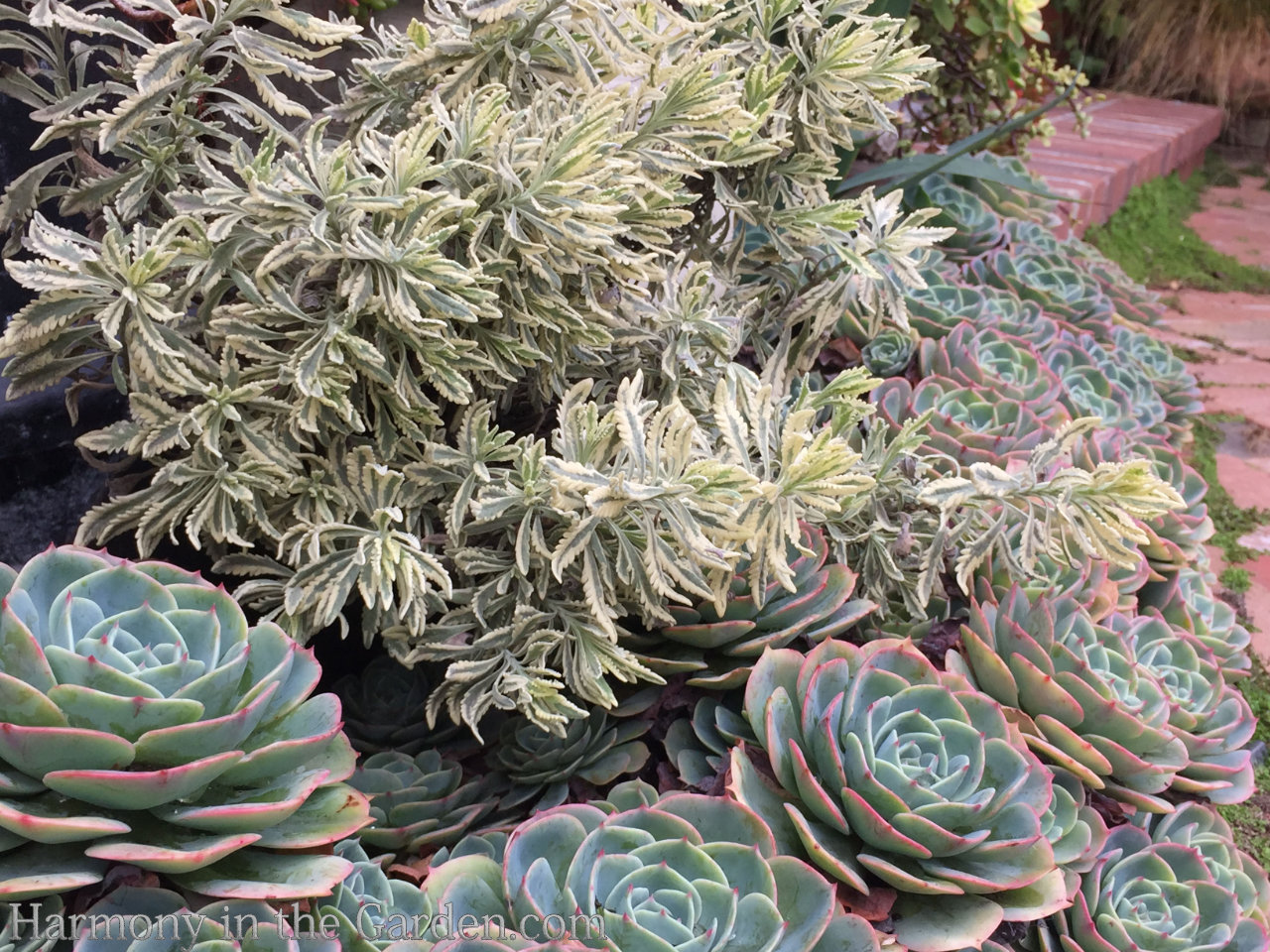
Lomandra ‘Platinum Beauty’ (zones 8-10)
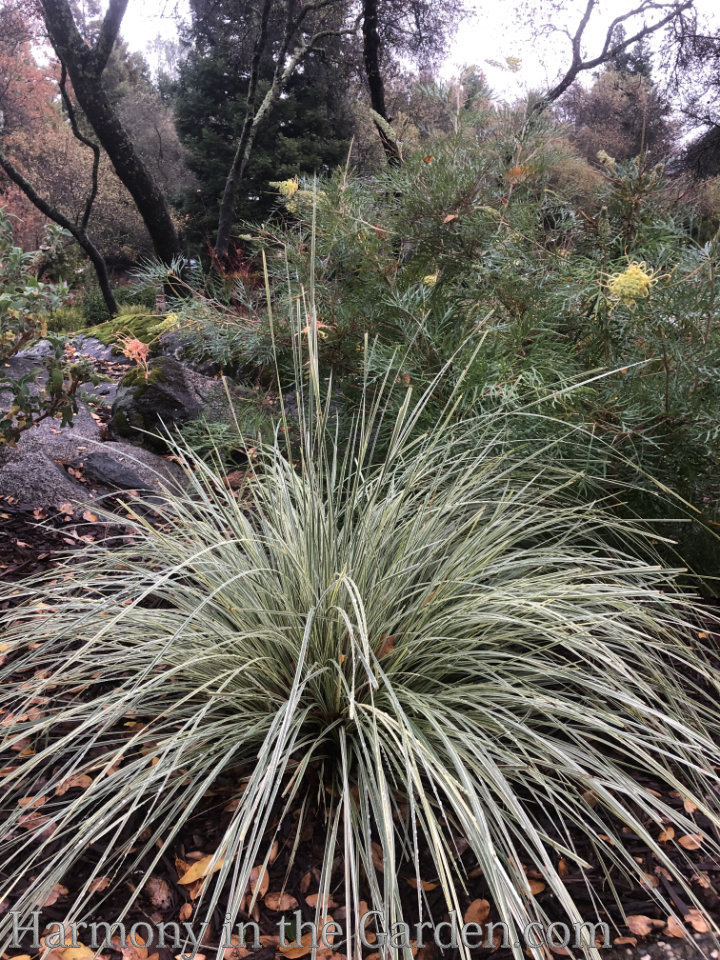
One of my favorite grasses of all is lomandra ‘Platinum Beauty.’
Whereas other variegated grasses tend to revert to green, not this variety – I’ve never had a single one revert (and I’ve grown scads of them!)
And similar to the above ‘Meerlo’, depending on what’s planted near the lomandra, the foliage colors change a bit.
The grass tends to look warmer when surrounded by apricot-colored roses (below) and looks brighter and whiter when surrounded by blues and greens (left).
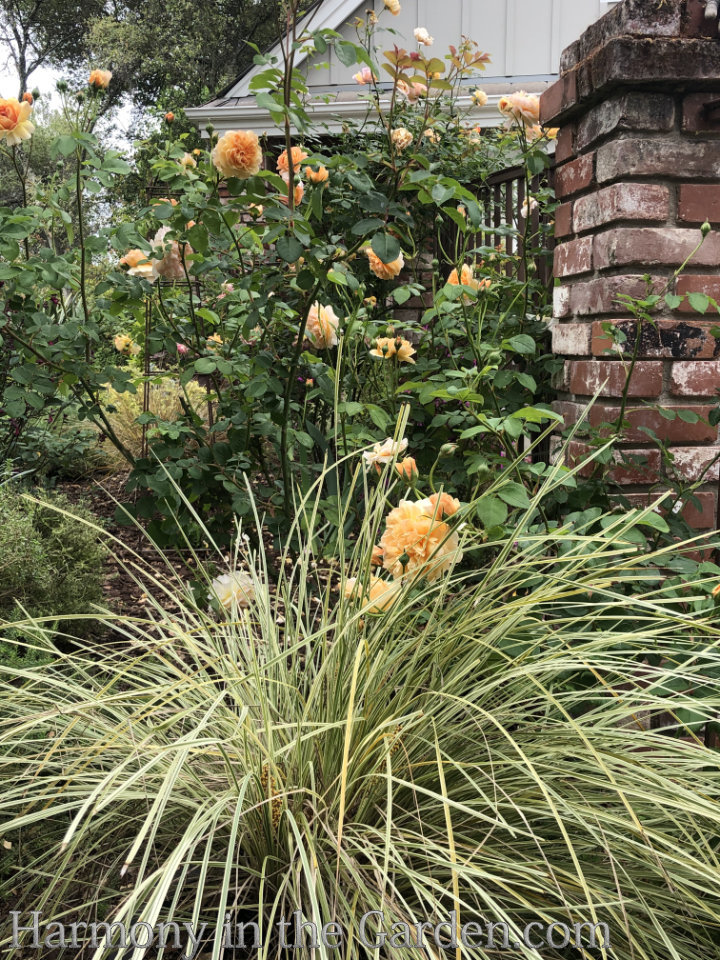
Salvia ‘Lavender Lace’
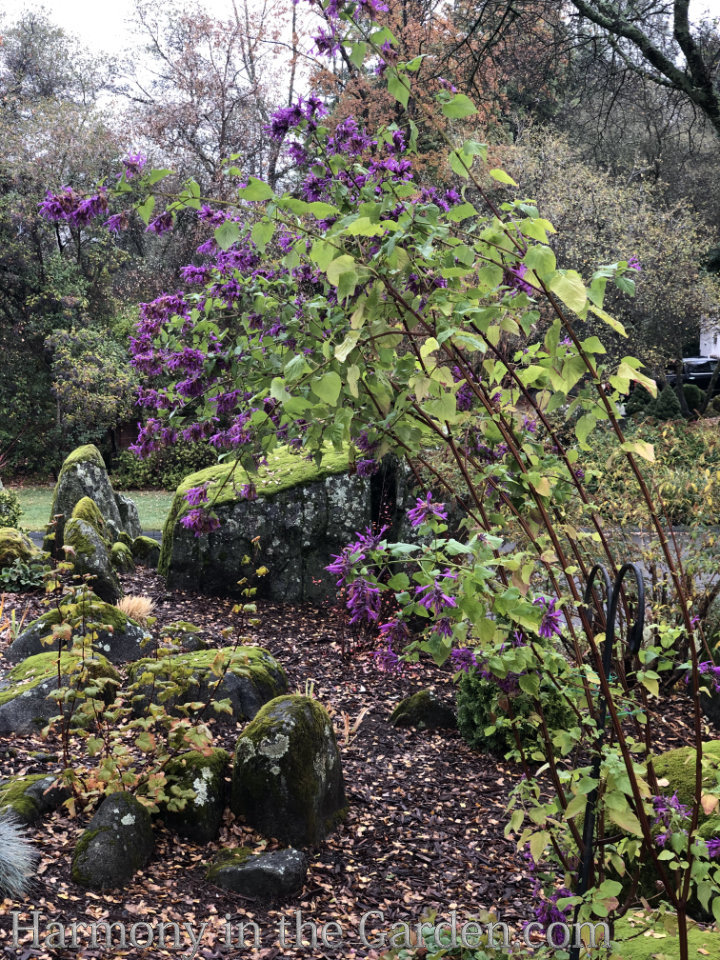
Remember my post about the Four Seasons of Salvias?
So even though ‘Lavender Lace’ isn’t part of Sunset’s Plant Collection (it’s found here at Flowers by the Sea), I HAD to show you how amazing it still looks.
Keep in mind this is mid-December! It’s been blooming for months now, and isn’t showing any signs of stopping soon!
Well, I hope I’ve given you a few new planting ideas for adding winter beauty to your garden.
If I’ve left anything out (which I KNOW I have) please share some of your favorites.
We all enjoy hearing your thoughts and suggestions!






12 Comments
Love all the information you provide.
Thank you, Dolores!
Hi Rebecca,
Do you prefer the Dianella ‘Coolvista’, over the Lomandras? I have found the Lomandras to be very drought tolerant and good in sun or shade.
Hi Judy – I love them both the same, to be honest, as the ‘Coolvista’ is blue which is a color I’m always trying to add more of in my garden. I’m going to plant one in the full sun here to see if it’s as bullet-proof as those lomandras are, but so far mine get a little shade (not much – just a few hours in the morning) and are thriving.
Wow, these plants are gorgeous! With the exception of a few, all are new to me. Thanks for the info, looking forward to adding things like this to my garden, I am in much need of evergreen interest in my space. I too would love to see a video of your garden and in any season!
I’m so glad you like them and hopefully we can add some to your garden. 🙂
Thank you for giving some more insight to good performing winter plants. I too adore Platinum Beauty Lomandra. I planted in my front boulevard strip, and in my backyard. I’ve also used them in a number of client’s yards. So glad to hear you have found them to be good performers. Also I have used the Merlo Lavender in a number of gardens and have not been disappointed.
This past spring my neighbor planted a Coprosma repens the variety appears to be ‘Pacific Sunset’. It has performed admirably. It looks gorgeous right now. In my opinion, it would be a great alternative to the purplish foliaged Barberries.
Hi Tami – I love coprosmas, too, and have had really good luck with one of them in particular, Tequila Sunrise, that grows with a bit of afternoon shade. The deer haven’t touched mine either, which is always a plus. Have you tried ‘Karo’s Red’? It’s a beauty. I think I need to update one of my older blog posts about coprosmas (thanks for the reminder!!) as they’re such a great evergreen plant in our area. 🙂
Hi! Love every idea you have! December can be such an uninteresting month.
Does the Fatshedera need shade? Can it stand sun? I appreciate all the other plants here can stand intense heat.
My crazy pop of color in November has been Mexican marigold. Everyone loves its intense color on my hill when nothing else is in bloom.
You mentioned talks and presentations that you give. I hope if any are open to the public, that you will mention here.
How about a spring video walk thru of your garden???
Hi Nancy. Yes, the Fatshedera needs shade (especially in my hot climate) but even in the more temperate Bay Area, it required dappled shade. It would probably be happy with morning sun, but nothing too harsh. I have a small Mexican marigold planted and can’t wait for it to turn into a 4×4 mound of beauty – lucky you to have one that’s giving you so much color this month. They’re amazing plants, aren’t they? A little stinky (in my opinion) but hey – that’s a great trade off for such a deer-resistant beauty. In Mexico, they make a tea out of the flowers that is supposed to help upset stomachs – just a fun fact from one of my installers who’s from Mexico. I’ll let you know if I have any public talks coming up, and your idea of a spring video walk thru sounds like a fun idea. Thanks for the suggestion!
Rebecca! Look at that beautiful, moss-covered rock! The plants are gorgeous but the environment is, as well. What can you tell about the rock and how you prepared it?
Thanks!
Hi Jill – I wish I could take credit for those mossy boulders but it’s all Mother Nature! When I moved here I had NO IDEA the giant granite boulders that are everywhere here (no wonder it’s called Granite Bay – ha!) would transform themselves within minutes of the first rainfall. The chartreuse color adds so much beauty to this area, I just love it. It always amazes me that even with the intense heat that we get, the temps aren’t enough to kill the dormant moss, which reliably returns every year.